Understanding Phantom S in Kiteboarding Techniques
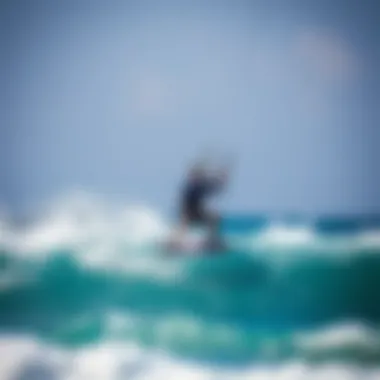
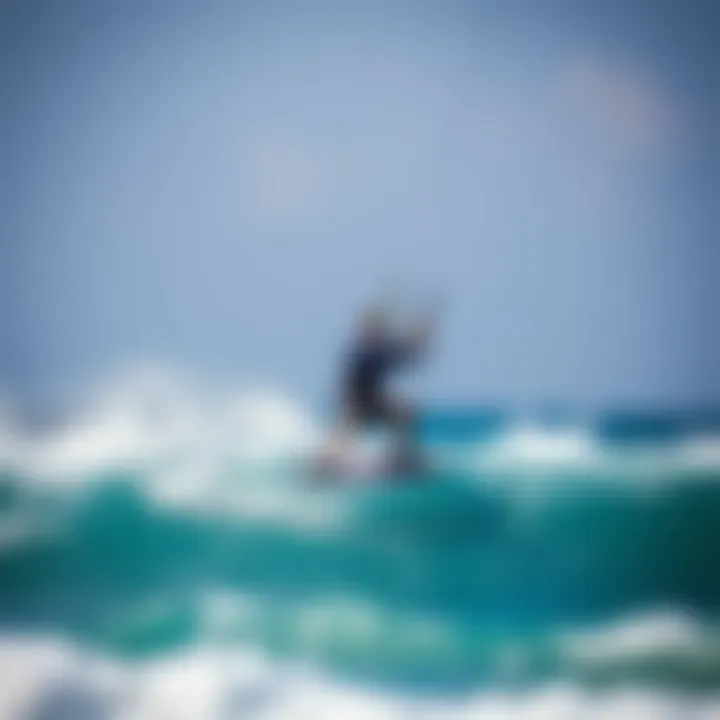
Intro
Kiteboarding is not just a sport; it's a dance with the wind, a merge of technique, gear, and mental fortitude. Among the many terms that circulate in kiteboarding circles, phantom s emerges as a particularly compelling concept. This idea encapsulates the subtle but profound nuances that can transform a kiteboarder's experience. Often misunderstood or overlooked, the phantom s can symbolically represent both the obstacles and boons of this adventurous sport.
Understanding phantom s requires a deep dive into various facets, from the intricacies of kite control to the psychological aspects of tackling the waves. In this guide, we’ll explore equipment insights, refine techniques for both beginners and veterans, and highlight safety protocols to enhance performance. This article aims to enrich your kiteboarding knowledge and appreciation, making phantom s a familiar companion on your water adventures. Strap in; we're going for a ride through the kiteboarding cosmos.
Equipment Insights
In kiteboarding, gear is more than just tools; they are extensions of the rider's intentions and capabilities. Understanding the right equipment that aligns with the phantom s philosophy is crucial for enhancing performance and safety.
Latest Gear Reviews
The ever-evolving world of kiteboarding gear means there’s always something new on the horizon. Recent reviews focus on three essential components:
- Kites: The latest models from brands like Slingshot and Duotone showcase advances in stability and responsiveness. Many kiteboarders are raving about the Slingshot RPM for its balance between power and control.
- Boards: The new North Jaime has caught attention for its lightweight design and rail profile, allowing for sharper turns and easier landings. It’s been a game-changer for many looking to hone their skills.
- Harnesses: Comfort and support play a huge role here. The ION Vector Vest has received high marks for both secure fit and cushioning, making it a favored choice among experienced riders.
When selecting gear, be mindful not only of performance but also how each piece contributes to your understanding of the phantom s, creating a seamless interaction between rider and equipment.
Essential Gear Maintenance
Maintaining your kiteboarding gear is key to longevity and performance. Here are some quick tips that can keep your equipment in peak condition:
- Washing: Always rinse kites and harnesses with fresh water after use. Salt and sand can be the death knell for fabrics and mechanisms.
- Storage: Store kites in a cool, dry place when not in use. Avoid cramming them into tight spaces; they need room to breathe.
- Regular Inspections: Check for any wear or tear, especially around seams and connections. Addressing these issues early can prevent catastrophic failures out on the water.
Adopting a routine maintenance schedule will help you stay safe and extend the life of your gear, letting you focus on overcoming challenges and mastering the phantom s.
Technique Exploration
Mastering the techniques in kiteboarding isn’t just about physical prowess—it's also about mental agility and awareness. As we dig deeper, let’s look at techniques tailored for various skill levels.
Beginner Techniques
For those just starting out, grasping the basics can lead to an earlier appreciation of the phantom s. Begin with these foundational techniques:
- Body Dragging: This essential skill helps you get back to your board in the water. It’s all about being comfortable and developing a feel for how your kite interacts with the wind.
- Water Starts: A proper water start can mean the difference between a smooth ride and a tumble. Practice controlling the kite while positioning your board beneath your feet.
Advanced Maneuvers
Once the basics are behind you, moving into advanced techniques should be your next step. Here are a few maneuvers that can truly elevate your kiteboarding experience:
- Jumping: Practicing your take-off and landing can unlock new dimensions in your riding, allowing you to brave higher obstacles and swim against stronger winds. Focus on your timing and body positioning.
- Kiteloops: This infamous maneuver can deliver an exhilarating ride. Just remember, learning kiteloops involves understanding the power of your kite against the wind, so work up to it gradually.
Each of these techniques, ranging from the novice to the advanced, adds layers to your understanding of phantom s, illustrating how personal growth in kiteboarding consistently intertwines gear mastery and technique refinement.
The journey through kiteboarding is not solely about conquering waves; it's also an exploration of self and the elements.
By delving into the emotional and physical reflections of kiteboarding, the concept of phantom s can flourish in your practice, enhancing both your skill and appreciation for this captivating sport.
Understanding Phantom S
In kiteboarding, grasping the concept of Phantom S isn’t just for the thrill-seekers or the show-offs. It stands as a critical understanding that can enhance both performance and safety on the water. Phantom S isn’t merely a term tossed around casually; it's an intricate blend of techniques, equipment, and even psychological aspects that can elevate a kiteboarder's game significantly.
Diving into the merits of this concept reveals its importance across various levels of experience, from novices eagerly learning the ropes to seasoned athletes perfecting their craft. For example, understanding local wind patterns, a key aspect of Phantom S, can dramatically influence a rider's ability to navigate the waves skilfully. Recognizing when to switch gears, adjust the kite positioning, or make a sudden turn can mean the difference between a successful ride or a tumble into the water.
Moreover, the benefits extend beyond mere performance enhancement. A firm grasp of Phantom S can also instill confidence among riders. When kiteboarders feel secure about their maneuvers, they are more likely to push their boundaries, leading to continuous improvement. This not only nurtures skill but also fosters a vibrant community of boarders who share experiences and tips.
Definition of Phantom S
Phantom S can be defined as the subtle yet powerful interaction between a rider's technique and the dynamics of their equipment. It embodies the idea of being one with the wind and the water—where the rider feels an intrinsic connection to their gear while executing maneuvers. While some might see kiteboarding simply as a sport of tricks and jumps, those who understand Phantom S delve deeper into the nuances. In this context, it represents an almost ethereal experience; a sensation that can only come from practice and exploration.
Historical Context in Kiteboarding
To truly appreciate the concept of Phantom S, one must reflect on the evolution of kiteboarding itself. Originating in the late 1980s, kiteboarding has undergone radical transformations, both in technical advancement and styles. Early enthusiasts relied on cumbersome kites, often battling rudimentary controls and harsh conditions.
With innovations in kite shape and materials over the decades, riders gained greater control and versatility. The introduction of depowerable kites allowed kiteboarders to harness their movements more efficiently, paving the way for advanced techniques, including those associated with Phantom S. Over time, what we see today as a finely-tuned sport is the result of years of experimentation, passion, and relentless pursuit of the perfect ride. So, understanding the historical backdrop of kiteboarding provides valuable insight into how the concept of Phantom S has emerged and evolved, setting the stage for modern kiteboarding practices.
The Techniques Behind Phantom S
Understanding the techniques involved in Phantom S is crucial for kiteboarders aiming to elevate their performance and safety within the sport. These methods encompass a combination of essential skills and advanced maneuvers that not only enhance the riding experience but also contribute to executing the Phantom S more effectively. This section breaks down the necessary components, elucidating the significance of each technique in achieving mastery and confidence on the water.
Core Skills Required
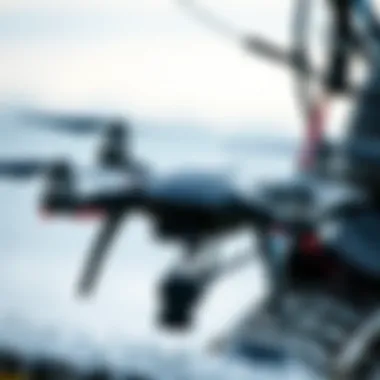
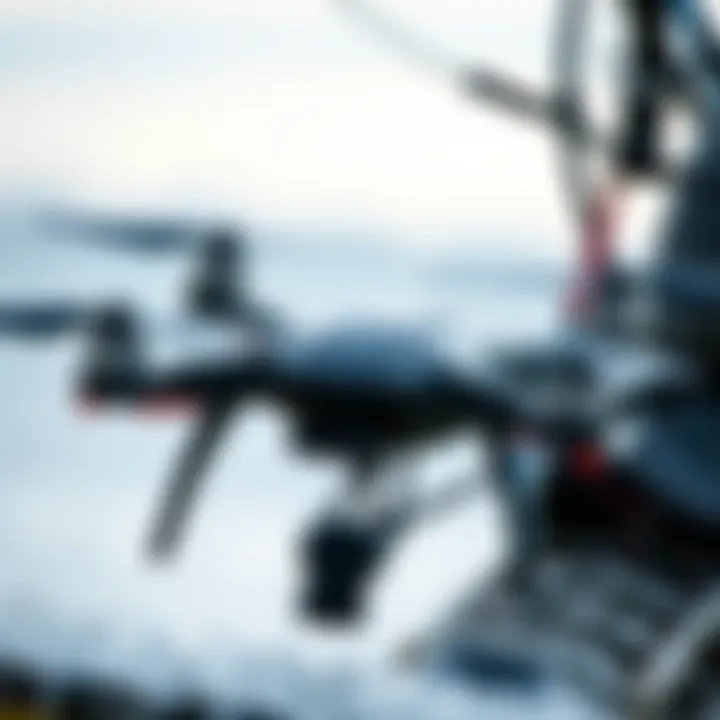
Core skills are foundational abilities every kiteboarder should possess. Without these essentials, one cannot hope to successfully maneuver through various kiteboarding scenarios.
- Kite Control: This is the ability to manipulate the kite's position and power. Without solid kite control, any maneuver becomes a shot in the dark. The kite needs to respond promptly to the rider's input, particularly when the rider executes a Phantom S, where timing is everything.
- Balance: Maintaining balance while maneuvering through changing conditions is vital. Successful execution of Phantom S requires a keen sense of weight distribution and body alignment. You need to feel the board beneath your feet to any changes in wind or water state.
- Reading Conditions: A capable kiteboarder must be able to assess weather and water conditions. This skill involves understanding wind patterns and recognizing potential hazards, which is crucial when navigating a Phantom S through variable environments.
Advanced Maneuvers
Advanced maneuvers in kiteboarding require a higher level of experience and skill. The following are the key advanced techniques you should focus on for mastering Phantom S:
Transitioning Techniques
Transitioning techniques play an integral role in executing Phantom S. They involve shifting from one direction to another seamlessly, which is essential for maintaining momentum and flow. A key characteristic of transitioning is the ability to change edge and direction without losing speed.
- Unique Feature: The fluidity of transitions allows for smoother performance and less abrupt changes that can throw off balance.
- Advantages: Improved transitions lead to a more enjoyable ride and give you an edge in competition, where smoothness can score higher points.
- Disadvantages: Without a solid grounding in core skills, attempting advanced transitions might feel overwhelming and could lead to falls.
Speed Management
Speed management is a critical factor that dictates how effectively you can perform the Phantom S. It refers to the ability to control your riding speed, both increasing when required and slowing down as necessary.
- Key Characteristic: The ability to maintain a steady speed while adjusting to wind changes is paramount. This skill allows for confident execution of advanced maneuvers.
- Unique Feature: Speed management enables riders to engage in tricks and transitions with a sense of control. If you rush, you risk losing your balance; if you slow too much, you can miss valuable opportunities.
- Advantages: Mastering speed management pays off in agility and safety, allowing you to ride more confidently in varying conditions.
- Disadvantages: Over-management might work against you in some situations, making it challenging to take off smoothly.
Edge Control
Edge control is about using the board's edge effectively to manipulate your speed and direction. This technique is especially valuable for making sharp turns and performing tricks, including the Phantom S.
- Key Characteristic: The ability to engage the rail of the board effectively can dictate how you interact with the water, significantly influencing maneuverability.
- Unique Feature: Good edge control allows for fine-tuned adjustments in your ride, accommodating changes in wave patterns and wind currents.
- Advantages: Riders with superior edge control can execute impressive tricks and maintain speed without losing stability.
- Disadvantages: Poor edge control can result in skidding or loss of momentum, compromising the fluidity of your rides.
Learning and mastering these techniques is not a walk in the park; it requires practice, patience, and persistence. But the benefits are certainly worth the effort. As you hone these skills, you expand your ability not just to perform the Phantom S but to enjoy the entirety of what kiteboarding has to offer. By equipping yourself with the right techniques, your confidence will soar, allowing you to tackle various conditions and styles with ease.
Equipment Considerations
When kiteboarding, the gear you choose can make or break your experience, especially when it comes to mastering the phantom s. Without the right equipment, even the best techniques may fall flat. As such, understanding the importance of each piece of your setup becomes critical in not just enhancing performance but also ensuring safety on the water.
Kite Selection for Phantom S
Selecting the right kite might feel like picking a favorite child. Different types cater to various conditions, so knowing what you need is essential. For the phantom s, look for kites that offer a good balance between power and control. The recommended models are typically those with moderate aspect ratios. These provide sufficient lift while allowing for responsive handling, which is crucial during complex maneuvers.
Consider the wind conditions in your area. A highly maneuverable kite can really help you during gusty situations. Additionally, double-check your kite's material; a rip-resistant fabric ensures durability, especially if you're often riding in harsher environments. Pay attention to the size of the kite as well. A larger kite may catch more wind and create more power, but it could also be overwhelming for less experienced riders.
Board Types and Their Impact
Not all boards are created equal, and choosing the right one can significantly affect your ability to execute the phantom s. When considering the board, think about both the material and shape. A lightweight board can offer better agility, allowing you to initiate and recover from maneuvers with ease. There’s no one-size-fits-all answer here, but most kiteboarders tend to favor boards with a subtle rocker profile if they plan to practice advanced tricks.
Here are some board types you might want to explore:
- Directional Boards: Ideal for wave riding and offer great stability, but may not be as responsive for tricks.
- Twin-Tip Boards: Versatile for all styles and perfect for beginner to intermediate riders, they allow you to ride in both directions, which is a plus for practicing phantom s.
- Freestyle Boards: Usually lightweight and with good flex; they cater well to riders keen on executing jumps and stunts.
When trying out different boards, take note of how each style influences your performance while attempting the phantom s. The feedback you get from each ride can offer you valuable insights into what works best for you.
Ultimately, the right equipment gives you the confidence to push boundaries and explore the thrilling world of phantom s in kiteboarding.
A comprehensive look at your setup allows for improved performance, greater safety, and a whole lot of fun on the water.
For those looking for more detailed insights into kiteboarding techniques and safety, consider visiting Kiteboarding.com and Britannica’s Kiteboarding page for a deeper exploration into the sport's intricacies.
Safety Protocols in Phantom S
Kiteboarding, while exhilarating, can pose risks if safety protocols aren't intertwined with the practice of Phantom S. Understanding safety protocols is paramount in minimizing potential accidents and enhancing overall enjoyment. The inherent dynamics employed in Phantom S can lead to unpredictable shifts in kite behavior; hence, protective measures act as a safety net for both beginners and seasoned kiteboarders alike.
Embracing safety protocols not only protects individuals from the capricious nature of the elements but also fosters a more secure environment for the entire kiteboarding community. Additionally, well-established safety measures build confidence, allowing riders to push their limits without being haunted by the fear of mishaps.
Essential Safety Gear
Safety gear forms the backbone of secure kiteboarding. The essentials range from personal flotation devices to helmets, which provide a cushion against potential impacts. A sturdy harness designed for the demands of Phantom S can enhance both performance and security.
Equipping oneself with a durable impact vest can indeed save a life. This vest guards the torso while maintaining flexibility for movements critical to executing Phantom S. Furthermore, wearing protective eyewear becomes vital to shield against harsh winds and UV rays, particularly during extended kite sessions.
The list of essential safety gear includes:
- Kite Leash: Keeps the kite tethered in case of loss of control.
- Life Jacket: A personal flotation device is crucial in the event of a fall into the water.
- Helmet: Ensures head protection from falls or collisions.
Ultimately, having the right gear is like having an insurance policy; it safeguards against unforeseen accidents while enhancing the thrill of kiteboarding.
Emergency Procedures
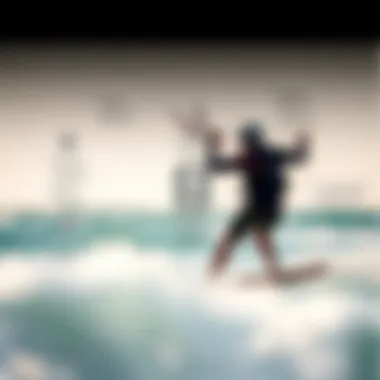
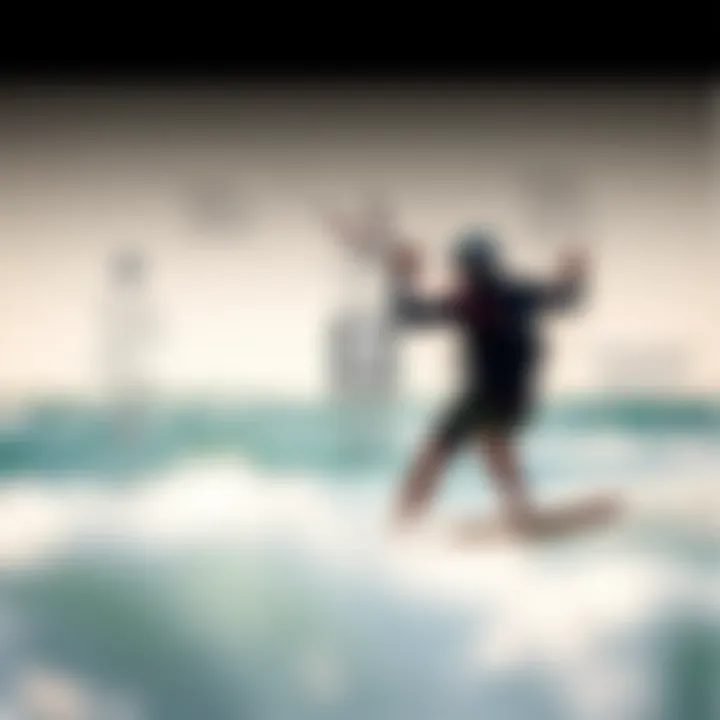
Preparing for emergencies is a key facet of kiteboarding practice, especially when navigating the intricacies of Phantom S. Knowing how to react in critical moments can be the difference between a routine outing and a harrowing experience.
Signal System
The signal system plays a crucial role in effective communication among kiteboarders. Clear signals can prevent misunderstandings and promote coordinated action in emergency scenarios. This system encompasses both verbal cues and visual signals that indicate intentions, while also addressing potential dangers.
A standout characteristic of the signal system is its universality; most kiteboarding communities agree on specific gestures, making it easy to implement. For example, a raised arm typically signals danger or the need for assistance, while circular motions can indicate preparation for a difficult maneuver.
The advantages of a robust signal system include:
- Enhanced Communication: Maintains clarity between riders, especially in crowded areas.
- Swift Response: Facilitates quick and effective actions in emergencies.
- Increased Safety: Reduces the chances of accidents during complex maneuvers like Phantom S.
However, its effectiveness hinges on all riders being aware and committed to adhering to the established signals.
Assisting Others
Assisting others during emergencies showcases the camaraderie that exists within the kiteboarding community. Helping fellow kiteboarders in distress not only ensures their safety but also reinforces a sense of responsibility among riders.
When discussing the core idea of assisting others, a notable characteristic is the proactive approach taken by experienced kiteboarders. This often involves keeping a watchful eye on comrades during tricky runs or advising them through difficult maneuvers. In emergencies, immediate action can often mean approaching a downed rider swiftly or offering a tow back to safety.
The unique features of this assistance include:
- Community Building: Creates stronger bonds within the kiteboarding community.
- Quick Recovery: Speeds up the process of returning to safety, reducing risk of injury.
- Skill Development: Newer kiteboarders gain insights from watching more seasoned peers react in crises.
While there might be inherent risks in unplanned assistance, fostering a culture of support not only underscores safety but amplifies the joy of kiteboarding.
Psychological Aspects of Phantom S
In the world of kiteboarding, the psychological factors play an equally vital role as physical capabilities and equipment choices. An understanding of the mental aspect can significantly influence a rider's performance, safety, and overall enjoyment of the sport. When discussing the concept of Phantom S, it becomes clear that how one perceives challenges—and the mental tools they employ—directly affects their ability to execute maneuvers effectively and with confidence. Anxiety can creep up on even the most seasoned riders; hence, grasping strategies to overcome this mental hurdle can lead to improved execution in techniques related to Phantom S.
Building Confidence
Confidence is but a cornerstone for achieving success in kiteboarding, particularly concerning more complex techniques such as Phantom S. It functions as the bridge between theory and practice, allowing kiteboarders to step beyond their comfort zones.
When riders are confident, they're more inclined to attempt stunts or maneuvers they might otherwise shy away from. They trust in their abilities, which can reduce hesitation and lead to smoother transitions during kiteboarding.
However, confidence isn’t simply a fixed quality. It fluctuates based on experiences, the environment, and personal perceptions. Therefore, consistently working on boosting one’s self-efficacy can be essential. Simple methods include setting small achievable goals during practice sessions and gradually building on those successes, which can serve as real fuel for enhancing confidence.
Mental Preparation Techniques
Visualization
Visualization acts as a powerful tool in the mental toolbox of a kiteboarder. It's a practice where an individual imagines performing a maneuver, like Phantom S, in their mind before executing it in reality. This mental rehearsal allows riders to simulate the experience without the physical risks associated with trying new techniques on the water.
A key characteristic of visualization is its ability to create neural patterns in the brain similar to those produced in actual performance. It lays a foundation of familiarity, essentially allowing the mind to prepare for physical execution. The profound benefit here is that it helps reduce anxiety; when the practitioner sees success in their mind's eye, they’re less likely to freeze up or falter when it comes time to perform.
One unique feature of visualization is that it’s available to anyone, regardless of their level of kiteboarding experience. Whether you’re just starting or are already a pro, painting a picture of your desired outcome can equally serve as a source of empowerment. However, a possible downside is if the practice focuses solely on perfect execution and neglects to plan for setbacks, potentially leading to increased frustration.
Mindfulness Practices
Mindfulness practices focus on maintaining a present-moment awareness that draws from meditation cultivations. Engaging in mindfulness helps kiteboarders center themselves in the ebb and flow of conditions and feelings that arise during rides, especially while working on complex Phantom S techniques.
A noticeable characteristic of mindfulness is its emphasis on non-judgmental acceptance. This attitude can lead to a deeper understanding of both inner feelings and external conditions, thus enhancing control over one's responses during kiteboarding.
The safe space mindfulness creates can act as a buffer against the nerves that come with trying new or difficult maneuvers. Having a clear mind helps in evaluating conditions accurately, which is crucial since kiteboarding is as much about adaptability as it is about skill.
However, mindfulness practices might take time to grasp and apply effectively, particularly for those unused to the concept of mental awareness. A newcomer might find it challenging to concentrate on their breath while simultaneously managing kite and board.
It’s easier to transpose confidence and presence of mind into performance when kiteboarding; understanding these psychological aspects is key to mastering skills like Phantom S.
Community Insights and Expert Opinions
Understanding community insights and expert opinions plays a pivotal role in grasping the multifaceted concept of phantom S in kiteboarding. It goes beyond just techniques and gears; it incorporates the lived experiences and knowledge from those deeply embedded in the sport. Kiteboarding is not solely an individual endeavor; it thrives on shared knowledge, mutual support, and evolving perspectives from different practitioners. This understanding creates a sense of camaraderie among kiteboarders, fostering a culture where learning from one another becomes indispensable. The exchanges that take place within the kiteboarding community help to shape the approaches and methodologies that are adopted by both novices and seasoned veterans, crystallizing the essence of what phantom S entails.
Interviews with Professionals
Interviews with seasoned kiteboarding professionals create a rich tapestry of knowledge regarding phantom S. These individuals often recount numerous experiences where their encounters with the phantom S phenomenon have impacted their performance or influenced their teaching methodologies. A notable example includes a professional kiteboarder discussing how mastering phantom S techniques greatly improved their ability to execute stunts and navigate stronger winds. This professional emphasized the importance of adaptability, stating, "It’s all about knowing when to engage that phantom S with the kite; making that split-second decision can literally make or break a run."
Such testimonials not only provide practical insights on skills but also inspire the upcoming generations of kiteboarders. Furthermore, professionals often reflect on the significant threat that mishandling phantom S can pose to newcomers, emphasizing the need for students to understand the underlying concepts before trying to implement advanced techniques.
User Experiences and Stories
User experiences and stories promote a grassroots understanding of phantom S, showcasing how kiteboarders from various backgrounds interpret and apply this concept in real-time. For instance, an enthusiast from Florida shared how they accidentally stumbled upon the phantom S while learning to manage their kite during high winds. "At first, it felt like a game of cat and mouse with the wind, but once I got the hang of the phantom S flow, everything clicked – the jumps became smoother, and I finally felt aligned with the kite!"
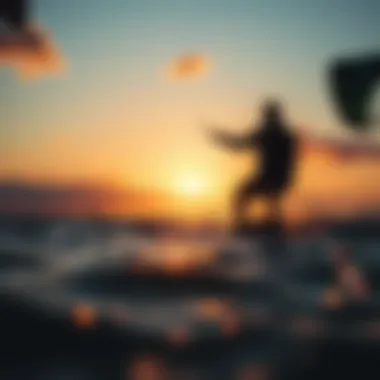

Sharing these stories breeds connection and fosters a shared learning atmosphere. Others narrate instances of challenges faced with phantom S, leading to lessons learned that resonate with peers in the community.
Some of the main points that come forth in these narratives include:
- The significance of recognizing the wind patterns and how they communicate with the body.
- The iterative nature of learning, where failures often create the foundation for mastering phantom S techniques.
- The collaborative spirit of kiteboarding, where experiences are shared and analyzed for the benefit of all.
Ultimately, community insights, combined with expert opinions, create a comprehensive understanding of phantom S. These elements not only help kiteboarders navigate their challenges more effectively but also enrich the sport with shared knowledge and inspiration.
Phantom S in Various Kiteboarding Styles
Phantom S is not just a buzzword in the kiteboarding world; it’s a concept that weaves through various styles, creating a rich tapestry of techniques and maneuvers that define the sport. Understanding how Phantom S interacts with different kiteboarding styles opens the door to greater performance and enjoyment on the water. Whether you’re looking to spice up your freestyle antics or enhance your wave riding, grasping the nuances of Phantom S can elevate your skills and confidence.
Freestyle Techniques
In freestyle kiteboarding, athletes rely heavily on the principles of Phantom S to execute complex tricks. This approach requires a deep understanding of timing and body positioning. When a rider integrates Phantom S, they essentially work to create a seamless flow that aids in executing spins, flips, and grabs. The following elements highlight how Phantom S plays a vital role in freestyle:
- Board Control: Mastering Phantom S helps with precise board handling, allowing riders to perform aerial tricks with minimal interruptions.
- Power Management: Knowing when to harness or release kite power is crucial. Phantom S training encourages recognizing the right moments to match board speed with kite lift, creating smooth transitions during maneuvers.
- Energy Efficiency: A good grasp of Phantom S translates into conserving energy, enabling a rider to execute multiple tricks without a hitch.
When honing freestyle techniques, riders might begin with basic tricks, gradually incorporating Phantom S principles to add flair. That way, both novice and seasoned athletes can show off their unique style while still staying true to the essence of the sport.
Wave Riding Considerations
As one glides over the ocean’s waves, Phantom S takes on a different flavor. In wave riding, it’s less about fancy tricks and more about the dance between rider, kite, and nature. Engaging with Phantom S means adapting one's approach to capitalize on the energy of waves, rather than merely cutting through them. Here are a few considerations:
- Kite Placement: The position of the kite significantly affects the rider's ability to harness wave energy. With Phantom S, understanding the kite's positioning relative to the wave helps in making those critical turns and adjustments.
- Timing: Just like with freestyle, the concept of timing is crucial. Recognizing when to pull on the backhand or shift weight forward can turn a simple cut down the line into a thrilling ride.
- Flow and Rhythm: Wave riding is about maintaining flow. Riders who embrace Phantom S tend to ride with a rhythm that resonates with the waves, making every carve and jump feel almost musical.
"In each wave, there exists an opportunity for connection. Phantom S becomes a bridge between the rider and the ocean, facilitating a more profound experience on the water."
Phantom S offers tools for both freestyle and wave riding, enriching techniques and enhancing performance. As kiteboarders become more attuned to Phantom S in their respective styles, they often discover layers to their skills they never knew existed. By studying and practicing these principles, they can ultimately transform their connection to kiteboarding and unlock new levels of enjoyment on the water.
For further insights, consider researching resources like Wikipedia and Britannica. Forums on platforms such as Reddit can also provide real-life experiences and discussions that deepen understanding of Phantom S.
Future Trends Related to Phantom S
The world of kiteboarding is continuously evolving, much like the waves in a coastal surf. This constant change brings new techniques, skills, and equipment to the forefront, all of which emphasize the concept of phantom S. Understanding these future trends is vital for kiteboarders who wish to stay ahead of the curve and enhance their performance on the water.
Innovation in Kite Design
Kite design is where the magic happens. Innovations in this field have a direct impact on how phantom S is experienced. Companies are now using advanced materials like Dyneema and graphene, which significantly reduce weight without sacrificing strength. These materials create kites that are not only more responsive but also easier to handle in varying wind conditions.
For instance, the new shapes of kites allow for better lift and stability, enabling riders to execute phantom S maneuvers more fluidly. This is especially beneficial for freestyle kiteboarding, where precision is key. The trend toward inflatable kites with unique wing designs offers a wider range of choices for enthusiasts, from beginners to experts.
- Benefits of Innovations in Kite Design:
- Enhanced aerodynamics
- Greater responsiveness
- Increased safety through better stability
These advancements allow kiteboarders to push their boundaries, explore deeper into phantom S, and enjoy longer sessions with less fatigue.
Emerging Techniques and Styles
As kiteboarding evolves, so do its techniques and styles. Phantom S now encompasses a blend of traditional and contemporary maneuvers, which keeps the sport vibrant and challenging. The styles emerging include a greater emphasis on fluid movements that are aesthetically pleasing as well as technically sound.
Some kiteboarders are beginning to experiment with blending techniques from other sports, such as surfing and windsurfing, resulting in a unique hybrid style that incorporates elements of each. This is where kiteboarding thrives on creativity.
To illustrate this:
- Freestyle Hybrid Techniques: Combining elements of traditional kiteboarding with surfing moves, allowing a new level of performance during competitions.
- Riding with Minimalist Gear: Some riders are leaving behind bulky equipment in favor of lighter options, which promotes more agility on the water.
The skills required to master these emerging styles can be quite different from what was popular even a few years ago. As riders adopt these new techniques, understanding the nuances of phantom S becomes essential.
"As kiteboarding evolves, the only constant is change. Embrace phantom S as it weaves the future of our sport."
In summary, the trends surrounding phantom S in kiteboarding offer a glimpse into the future of the sport. Through innovations in kite design and the emergence of new techniques, kiteboarders are given tools and inspiration to elevate their riding experience, fostering a vibrant community eager to explore the limitless possibilities that lie ahead.
Culmination and Key Takeaways
As we wrap up our exploration of phantom s in kiteboarding, it’s clear that this concept, though often elusive, plays a pivotal role in maneuvering and performance improvement. Understanding phantom s is not just about mastering a trick but also about grasping how it fits into the broader landscape of kiteboarding dynamics, techniques, and the mental attitude necessary for success on water.
Summarization of Key Themes
Throughout this article, we dissected various layers of phantom s, honing in on essential topics:
- Techniques: The core skills and advanced maneuvers crucial for mastering phantom s are vital to every kiteboarder's toolkit. From transitioning techniques to nuanced edge control, each skill augments overall riding proficiency.
- Equipment Considerations: The kite and board selection impacts how effectively one can perform phantom s. Specific gear rather than just any might yield better synergy with an individual's style, maximizing success and enjoyment.
- Safety Protocols: A discussion on safety is paramount, especially regarding phantom s maneuvers. Adhering to safety protocols, from wearing the right gear to understanding emergency procedures, ensures that kiteboarders can push their limits without compromising safety.
- Psychological Aspects: Building confidence and preparing mentally are as important as the physical aspects. Techniques like visualization and mindfulness practices empower kiteboarders to tackle challenges head-on, effectively cultivating a mental edge against fears and uncertainties.
To sum it up, phantom s is intertwined within the kiteboarding experience, echoing the importance of skill training, proper equipment, safety measures, and psychological readiness. Engaging with these themes fosters a more enriched understanding and appreciation of the sport.
Encouragement for Ongoing Learning
Kiteboarding is an ever-evolving sport, and as such, continual learning is key to staying ahead. Engaging with the kiteboarding community through forums, social media platforms like Reddit and Facebook, or specialized sites like Britannica and Wikipedia enhances knowledge and technique refinement.
- Participate in local workshops or training sessions: Connecting with seasoned kiteboarders can offer insights and practical tips not found in tutorials or articles.
- Stay updated on gear innovations: The industry regularly sees new design breakthroughs. Keeping abreast of these changes can lead to better performance and safety nuances that could enhance your kiteboarding experience.
- Document your progress: Whether through journals or video recordings, reviewing your journey can highlight improvements, helping refine techniques and build confidence.







